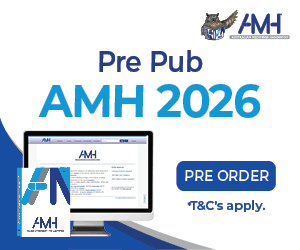Student nurses, midwives, teachers, and social workers will be paid $319.50 per week while undertaking their mandatory clinical placements under a new federal government measure to address rising ‘placement poverty’.
In the lead up to next week’s May budget, the Albanese Government today announced it will establish a ‘Prac Payment’ to financially support students to complete workplace placements required as part of their courses.
Australians studying to be a teacher, nurse, midwife or social worker will be eligible for the payment, which will provide around 68,000 higher education students and over 5,000 VET students each year with $319.50 per week during their clinical and professional placement periods.
Benchmarked to the single Austudy per week rate, the payment will be means-tested and available from 1 July 2025, and be in addition to any income support a student may also receive, the government said.
The Australian Nursing and Midwifery Federation (ANMF), which has long advocated for paid support for students undertaking mandatory clinical placements, commended the government’s pledge, saying it would finally recognise the financial and social pressures student nurses and midwives face while typically completing a minimum of 800 hours in placements.

This includes losing income from their usual jobs and being forced to pay for a range of out-of-pocket costs including travel and tolls, accommodation, parking, childcare, and uniforms.
In its 2024-25 budget submission, the ANMF called on the federal government to fund payments for nursing and midwifery students undertaking placements as part of their courses, including meals, travel, and accommodation allowances.
“This new payment will help alleviate these costs and better support students who need to complete their clinical placements before starting their career,” ANMF Federal Secretary Annie Butler said.
“Alleviating financial burdens will also encourage more students into the nursing and midwifery workforce – supporting them through their, often, challenging courses.”
The introduction of the new payment acts on the advice of the Australian Universities Accord Final Report, which called on the federal government to provide financial support for students as part of their courses to ensure they don’t fall into poverty, and that there is enough skilled graduates for future jobs.
“This will give people who have signed up to do some of the most important jobs in this country a bit of extra help to get the qualifications they need,” Education Minister Jason Clare said.
“Placement poverty is a real thing. I have met students who told me they can afford to go to uni, but they can’t afford to do the prac.
“Some students say prac means they have to give up their part-time job, and that they don’t have the money to pay the bills.”
The Council of Deans of Nursing and Midwifery said the financial support would help address the very real challenges students face.
The CDNM is pleased to see this recognition by the Commonwealth government of the additional challenges these students face in meeting these compulsory requirements of their programs of study,” CDNM Chair, Professor Karen Strickland, said.
“Nurses and midwives are critical care providers in the Australian health system. This payment will support students in continuing their studies and ultimately graduating to take their place in the health workforce.”
Important announcement from Fed Gov – from next year, financial support will be provided to students undertaking mandatory clinical placements. This is a result of numerous advocacy from peaks bodies and student groups. Great news coming in the week of #IDM24 and #IND24 https://t.co/12o8xcvnWL
— Prof Karen Strickland RN (@strictlykaren) May 6, 2024
Appearing on ABC’s RN Breakfast this morning, Mr Clare said the government would work with unions and the university sector to ensure it sharpens and defines the means testing model ultimately put into legislation to ensure “we’re giving this to the people who need it the most”.
Speaking to the ANMJ earlier this year, final-year midwifery student Erin Pereira estimated it has cost her about $9,000 each year in out-of-pocket expenses to complete clinical placement hours as part of her Griffith University Bachelor of Midwifery.
“The attrition rate in midwifery is quite bad. A lot of students drop out, and I know a lot of it is due to the fact that it’s such an expensive degree to get through, with huge placement hours,” said Erin.









13 Responses
This should be available to all students who undertake their nursing, not just the ones who pass a means test. This will essentially mean, that most of us will not get the payment. however alot of us do not have savings to cover us if we were to take 800 hrs off in prac. I know myself, I live week to week. I work hard, Iam an EN and I would love to become an RN, but financially it is impossible. To means test is unfair. If the government really cared about their nurses, they would make paid prac for everybody.
Exactly, I am currently doing my conversion from EN to RN, but for me to go on prac I have to for go all of my holidays.
I am a single income earner with a mortgage and live pay cheque to pay cheque.
Working in the country and guessing that all my peace will be metro, so paying out accomodation, parking etc $319 a week is not going to go far, if we get it at all, because you can bet the loop whole of means testing will get us.
What about degrees like occupational therapy thst require more then 1000 hours placement
And Speech Pathology
I know it’s a different era/context for work/training – I trained at a hospital for 3 years to become a RN – decades ago. It was a full time paid job – and during our 4 week study blocks – we were paid at a base hourly rate – trainees today should at least get the latter for their Practical Placements.
That is interesting to know, wonder why it changed.
especially us ENs because we are literally nurses already and can be helpful in the ward as it is.
What happens to the students already half way through the degree and have done half the hours do they still get paid for the remainder of the hours required.
Well about time ! And they could even up that amount too.
Prac Poverty (for all allied health students), also includes the hundreds of dollars a spent on doctors bills to get immunisations, yearly CPR and first aide tests, mask fit testing, blue cards, police checks etc. these are all big outlays so the payment will be gone before the first practice has even commenced. At least the government has recognised some of the financial outlays.
As an Educator who teaches nursing students both in the classroom, in the lab clinically and during placement, I can honestly say that we have already lost a high number of excellent students due to the cost of placement. This burden causes anxiety and family pressure on the student. A number of nursing students have no choice but to live sometimes in their cars, in order to afford to pay their tuition or cost of placement.
So you plan to put multiple students on prac together, where some get ‘paid’ and others don’t? Where is the logic in that?
Rural Nursing Students are already at a significant disadvantage compared to City Students with no access of accomodation and access only of scholarships which for most are unattainable. While this goes some way to help the disparity is still there.